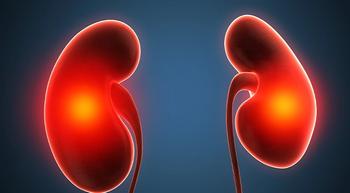
- Genitourinary Cancers Special Issue
- Volume 1
- Issue 1
Prioritizing Clinical Trials Led to New Therapies for Kidney Cancer
Ten years ago, patients with advanced RCC had very few treatment options, yet today, there are multiple therapeutic strategies and more in the pipeline for this not-very-common tumor type, writes our editor-in-chief, Debu Tripathy.
WHEN I CONSIDER THE STATUS OF THERAPIES for RENAL CELL CARCINOMA (RCC), I’m struck by the amount of progress that can be made in treatment for one cancer subtype in a relatively short time, when concerted effort is aimed in the right directions.
Ten years ago, patients with advanced RCC had very few treatment options, yet today, there are multiple therapeutic strategies and more in the pipeline for this not-very-common tumor type. This has, of course, impacted on the longevity and quality of life of patients, even though there is a long way to go.
As in many other kinds of cancer, there’s a lot of excitement around immunotherapy when it comes to treating RCC. Older immunotherapies that were used to treat the disease, interleukin-2 and interferon, were not widely effective but did uniformly cause very serious side effects. The recent approval of the immune checkpoint inhibitor Opdivo (nivolumab) in this disease introduced the possibility of extending survival with an immunotherapy that is much less toxic than the older incarnations.
At the same time, there’s been a veritable explosion in the realm of targeted treatments for kidney cancer. Anti-angiogenic drugs like Avastin (bevacizumab) interfere with the blood vessels tumors need in order to grow, and these work particularly well in renal cancers because the majority of cases are caused by a genetic lesion that results in an abnormal proliferation of these blood vessels and associated tumors. Many other targeted drugs that treat kidney cancer, such as Cabometyx (cabozantinib), are kinase inhibitors, meaning that they block the actions of certain cellular proteins that are responsible for driving the disease.
So how did we end up with so many treatment options getting approved in such a short time to treat a disease that’s not especially common? The success is a testament to the importance of enrolling as many patients as possible in clinical trials. In the case of RCC, this occurred through a combination of aggressive pharmaceutical trial development and academic centers prioritizing this research, with community centers following suit. This was necessary because renal cell cancer is not that common, so drug companies had to make sure their trial designs were efficient and that their enrollment plans were robust — requiring collaboration from physicians/ investigators and also patient organizations to ensure that the trials were completed successfully.
As these efforts to create better therapies for RCC continue, we in the research community must not simply sit back and appreciate our new menu of options, but must also study the techniques that were used to get us here. If scientists apply these strategies to research across the spectrum of cancer types, their work will be able to benefit more patients with a wider array of diseases.
I feel confident that this will happen, and that we will continue to see the positive results of those efforts. In fact, as in many other cancers, I hope we’ll begin to see trends toward making this a chronic illness that allows patients to live normal lives — if not outright cures, which are currently still quite rare.
DEBU TRIPATHY, M.D.Editor-in-ChiefProfessor of MedicineChair, Department of Breast Medical OncologyThe University of Texas MD Anderson Cancer Center
Articles in this issue
about 9 years ago
Q & A With Olympian Scott Hamilton: Turning Cancer Upside Downabout 9 years ago
Prostate Cancer Screening: Where Do We Stand?about 9 years ago
Hormonal Therapy for Prostate Cancer: A Closer Lookabout 9 years ago
Cystectomy to Treat Bladder Cancer: It's Complicatedabout 9 years ago
Honing in on Bladder Cancer: Key Factsabout 9 years ago
On the Side: An Overview of Prostate Cancer Treatment Side Effectsabout 9 years ago
Another Reason for Excitement About Cancer Immunotherapy




